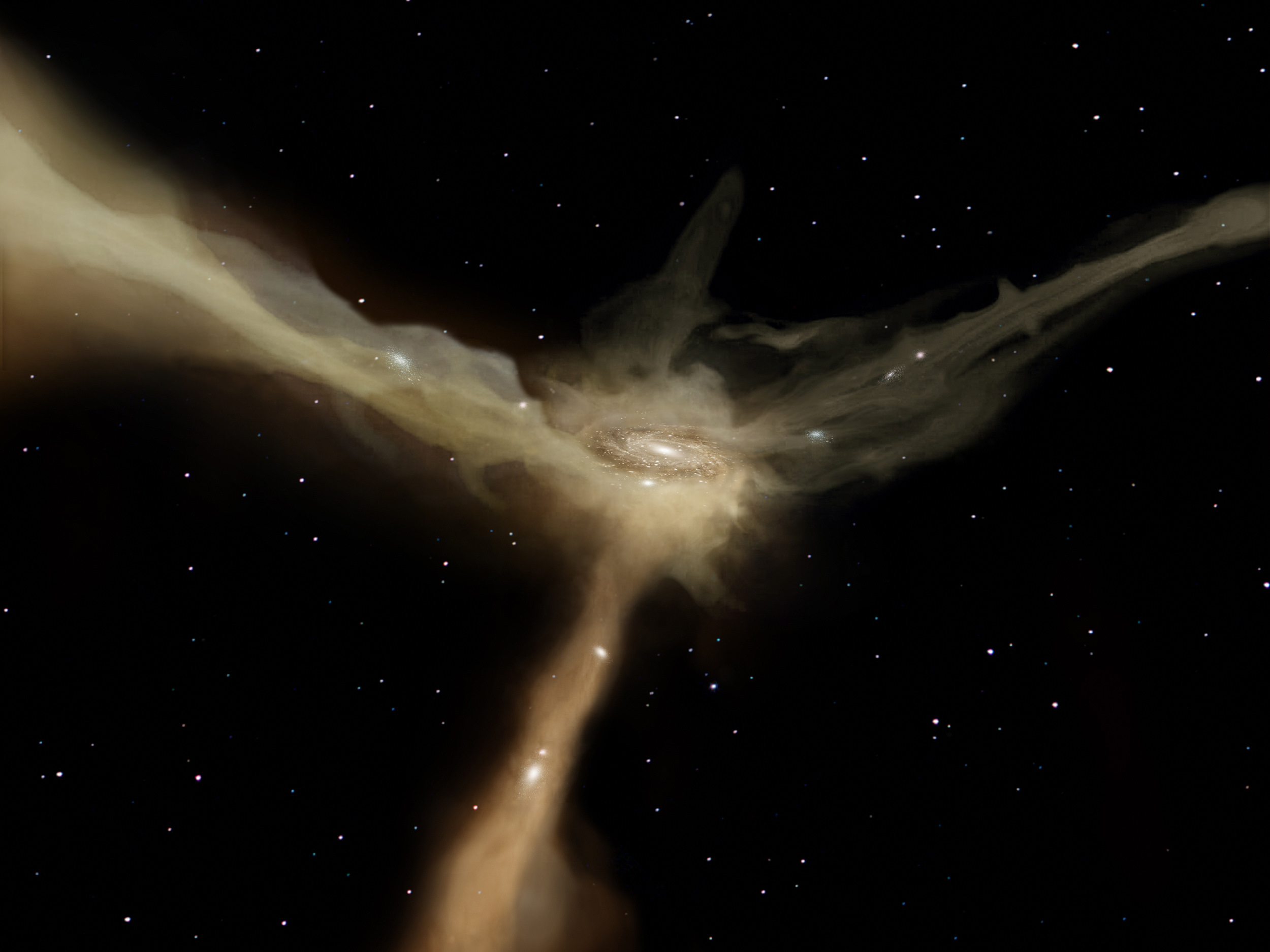How do you weigh one of the largest objects in the entire universe? Very carefully, according to new research.
Continue reading “Here’s How to Weigh Gigantic Filaments of Dark Matter”Here’s How to Weigh Gigantic Filaments of Dark Matter


Space and astronomy news

How do you weigh one of the largest objects in the entire universe? Very carefully, according to new research.
Continue reading “Here’s How to Weigh Gigantic Filaments of Dark Matter”Exploring the Moon poses significant risks, with its extreme environment and hazardous terrain presenting numerous challenges. In the event of a major accident, assistance might take days or even weeks to arrive. To address this, Australian researchers have created a distress alert system based upon the COSPAS-SARSAT technology used for Earth-based search and rescue operations. It relies on low-power emergency beacons that astronauts could activate with minimal setup and use a planned lunar satellite network for communication and rescue coordination.
Continue reading “How Could Astronauts Call for Help from the Moon?”Volcanoes are not restricted to the land, there are many undersea versions. One such undersea volcano known as Hunga Tonga-Hunga Ha’apai off the coast of Tonga. On 15th January 2022, it underwent an eruption which was one of the most powerful in recent memory. A recent paper shows that seismic waves were released 15 minutes before the eruption and before any visible disruption at the surface. The waves had been detected by a seismic station 750km away. This is the first time a precursor signal has been detected.
Continue reading “There Was a 15 Minute Warning Before Tonga Volcano Exploded”
Some binary stars are unusual. They contain a main sequence star like our Sun, while the other is a “dead” white dwarf star that left fusion behind and emanates only residual heat. When the main sequence star ages into a red giant, the two stars share a common envelope.
This common envelope phase is a big mystery in astrophysics, and to understand what’s happening, astronomers are building a catalogue of main sequence-white dwarf binaries.
Continue reading “Main Sequence and White Dwarf Binaries are Hiding in Plain Sight”
11 million years ago, Mars was a frigid, dry, dead world, just like it is now. Something slammed into the unfortunate planet, sending debris into space. A piece of that debris made it to Earth, found its way into a drawer at Purdue University, and then was subsequently forgotten about.
Until 1931, when scientists studied and realized it came directly from Mars. What has it told them about the red planet?
Continue reading “What a Misplaced Meteorite Told Us About Mars”
Uranus is an oddball among the Solar System’s planets. While most planets’ axis of rotation is perpendicular to their orbital plane, Uranus has an extreme tilt angle of 98 degrees. It’s flopped over on its side, likely from an ancient collision. It also has a retrograde rotation, opposite of the other planets.
The ice giant also has an unusual relationship with the Sun that sets it apart from other planets.
Continue reading “Uranus is Getting Colder and Now We Know Why”A camera aboard the Mars Express orbiter finds a new lease on life.
Sometimes, limitations can lead to innovation. A recent paper highlights how researchers are utilizing the VMC (Visual Monitoring Camera) aboard the European Space Agency’s (ESA) venerable Mars Express orbiter.
The work is a collaboration between the European Space Agency (ESA) and the University of the Basque Country.
Continue reading “How Scientists Repurposed a Camera on ESA’s Mars Express Mission”CubeSats are becoming more and more capable, and it seems like every month, another CubeSat is launched doing something new and novel. So far, technology demonstration has been one of the primary goals of those missions, though the industry is moving into playing an active role in scientific discovery. However, there are still some hurdles to jump before CubeSats have as many scientific tools at their disposal as larger satellites. That is where the Space Industry Responsive Intelligent Thermal (SpIRIT) CubeSat, the first from the Univeristy of Melbourne’s Space Lab, hopes to make an impact. Late in 2023, it launched with a few novel systems to operate new scientific equipment, and its leaders published a paper a few months ago detailing the progress of its mission so far.
Continue reading “SpIRIT CubeSat Demonstrates a Operational Gamma and X-Ray Detector”Buried in the treasure trove of the Gaia catalog were two strange black hole systems. These were black holes orbiting sun-like stars, a situation that astronomers long thought impossible. Recently a team has proposed a mechanism for creating these kinds of oddballs.
Continue reading “Sun-Like Stars Around Black Holes: What Gives?”
SpaceX’s Starship launch system went through its sixth flight test today, and although the Super Heavy booster missed out on being caught back at its launch pad, the mission checked off a key test objective with President-elect Donald Trump in the audience.
Trump attended the launch at SpaceX’s Starbase complex in the company of SpaceX CEO Elon Musk, who has been serving as a close adviser to the once and future president over the past few months. In a pre-launch posting to his Truth Social media platform, Trump wished good luck to “Elon Musk and the Great Patriots involved in this incredible project.”
Continue reading “Starship’s Booster (and Donald Trump) Make a Splash With Sixth Flight Test”